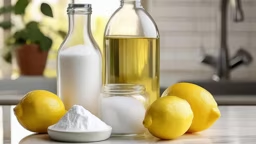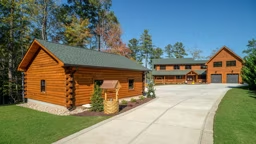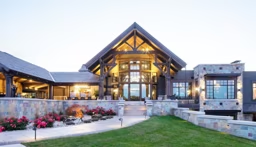
Q: Recently, I’ve seen log and timber homes that have a bluish tint to the wood. I actually like the look, but I can’t help but wonder if something is wrong with it. What makes the wood turn blue, and is it safe?
Answer:
Blue-stained logs and timbers — even dimensional lumber — have had a surge in popularity over the past several years. Once shunned as being defective or wrongfully assumed that it was moldy, the wood’s bluish cast is caused by microscopic fungi in the sapwood of a tree, most typically pine species. According to the experts at the Southern Forest Products Association, the fungi do not cause decay or structural inferiority, nor do they pose a health risk. The only impact to the wood is the color, which can be uniquely beautiful in a log home setting.Blue-stained wood is often harvested from “standing dead” timber, meaning trees that died as a result of a bark-beetle infestation while still standing in the forest. Fear not — the beetles are dead and gone long before the wood goes to market. Plus, it’s very eco-friendly, so you can choose it for your log home with a completely clear conscious.
Is it blue stain? Or is it mold?
If you’re considering blue-tinted wood for your log home, there’s an easy test you can conduct to make sure it’s, indeed, blue stain and not mold: Lightly rub the affected area of the wood. Mold grows on the surface and can be brushed off or smeared, whereas blue stain penetrates deep into the wood fibers and cannot be removed. If it sticks, it’s safe.Source: Southern Forest Products Association
See also: How to Choose a Stain for Your Log Home











